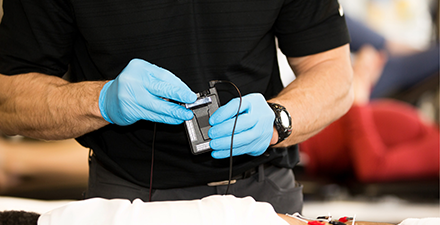In its push toward outcomes-based models, the US Centers for Medicare and Medicaid Services (CMS) needs to take a closer look at wound care, say authors of a new study that estimates nearly 15% of all Medicare beneficiaries experience chronic nonhealing wounds at an annual cost of nearly $32 billion. And the researchers believe those numbers are on the conservative side.
The study, recently published in Value in Health, analyzed data from Medicare’s 5% Limited Data Set during 2014 for details on claims in which wounds were the primary or secondary diagnosis. Researchers looked at costs, both in aggregate and by care setting, for 12 types of wounds: arterial ulcers, diabetic foot ulcers, diabetic infection, chronic ulcer, pressure ulcer, skin disorders, skin infection, surgical wounds, surgical infection, traumatic wound, venous ulcers, and venous infection. Here’s what they found:
- In 2014, approximately 14.5% of Medicare beneficiaries were diagnosed with at least 1 type of wound or wound infection—that’s about 8.2 million patients.
- Surgical wound infections were the largest category, at 4% of beneficiaries, followed by diabetic wound infections (3.4%) and nonhealing surgical wounds (3%). Pressure ulcers were associated with 1.8% of beneficiaries; venous ulcers were present in 0.9% of Medicare patients.
- Although Medicare’s episode-of-care payment system makes it hard to tease out exactly how much is spent on care associated with each of various conditions a patient may have experienced, authors were able to generate a 3-tier set of estimates based on whether the wound was a primary or secondary diagnosis. Overall costs were estimated at $28.1 billion annually under the most conservative model and up to $96.8 billion under a model that assumed the wound “was always the underlying cause of the service.” Mid-range cost estimate was $31.7 billion.
- In terms of wound type, the highest costs were associated with surgical wounds ($11.7 billion, $13.1 billion, and $38.3 billion in the 3-tier model), followed by diabetic foot ulcers ($6.2 billion, $6.9 billion, and $18.7 billion).
- Mean Medicare spending per wound was $3,415, $3,859, or $11,781 depending on the estimate models, with arterial ulcers and pressure ulcers registering the highest rates of spending per wound.
- Spending on wound care for hospital outpatients was nearly twice as high as inpatient spending, with estimate models at $9.9 billion, $11.3 billion, and $35.8 billion.
Authors believe that that data point to the need for CMS to question assumptions that have played into how it establishes episode-based measures that do not encompass wound care and are rooted in inpatient models.
“The construction of these episode groups reveals 2 important misconceptions,” authors write. “The first is that chronic nonhealing wounds represent a less significant burden [than] other conditions, and the second is that the primary driver of cost is the hospital inpatient stay. Our data dispute both assertions. Not only does chronic wound care represent a large portion of the Medicare budget, but our data suggest there has been a major shift of costs from hospital inpatient to hospital outpatient settings.”
Authors acknowledge that more analysis is needed to arrive at clearer estimates of costs associated with wounds, but they believe the study’s results could be the basis for the development of “more appropriate quality measures and reimbursement models, which are needed for better health outcomes and smarter spending for this growing population.”
The study was funded by the Alliance of Wound Care Stakeholders. APTA is a member of the alliance.
Research-related stories featured in PT in Motion News are intended to highlight a topic of interest only and do not constitute an endorsement by APTA.
